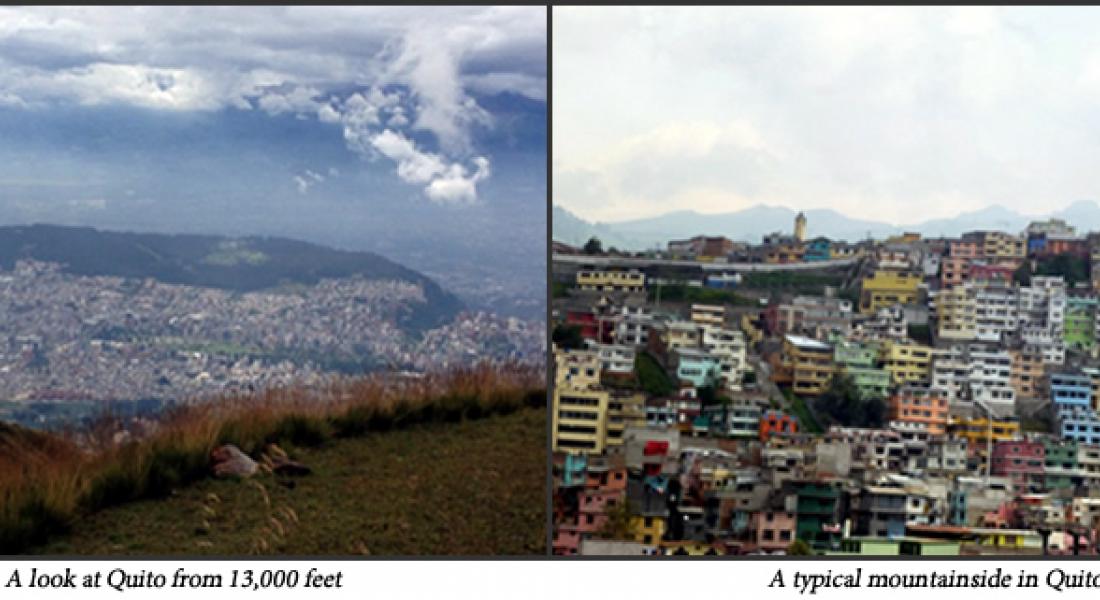
My first week exploring the housing conditions in Quito has been incredibly exciting and informative. I am here for eight weeks learning as much as I can about Quito’s construction practices and analyzing these practices in regards to their earthquake resiliency. Quito is the capital city of Ecuador and has an estimated population of 2.5 million, although the actual number is quite certainly much higher. Quito lies in a valley in the Andes Mountain Range. There are many wealthy areas in the city itself, and the majority of poor people live on the mountainsides. The city runs north and south and is very long and narrow. As the pictures below illustrate, overpopulation is a major concern in Quito. As building space has become more and more limited, people have gone further up into the mountains to build their homes. Many of these homes are built without land ownership or construction expertise, and are very susceptible to landslides due to improper foundations.
During my time here I am staying at El Centro del Muchacho Trabajador, an organization in Quito that works with poor families, providing three meals a day, health and dental care, and education that includes technical training. You can learn more about the center at workingboyscenter.org. The Working Boys Center works with over 400 Ecuadorian families, which has proven to be an indispensable contact for me. I was able to spend this week visiting families of the center at their homes, something I plan to do much more of during my stay. From these home visits I learned that almost every building in Quito, whether residential, commercial, or industrial, is made of concrete and cinder block, which is simply referred to here as block. What was interesting to learn is that the use of concrete and block is not due to financial constraints, as I had assumed…
(More details will be available in Kevin’s final report to be posted in September 2013.)





